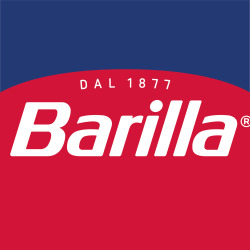The Oil Barons Ledger: Accounting in the Oil & Gas Sector by Rahul Gandhi CPA

The alternative approach, known as the FC method, allows companies to capitalize on all operating expenses related to locating new oil and gas reserves regardless of the outcome. Oil and gas companies need to adhere to specific regulatory and tax reporting requirements, and their financial reporting has to comply with industry standards and guidelines. These requirements vary widely from state to state, and it’s important to have a system that can support these requirements and make compliance a breeze. As oil and gas reserves are extracted, companies need to https://www.bookstime.com/ allocate the costs of acquiring and developing these reserves over time.
Production Sharing Arrangements (PSAs)

The service provider should start recognizing revenue related to this performance obligation when the mobilization activities commence, not when drilling begins. The FASB has approved a practical expedient that allows companies to treat shipping costs as a fulfillment cost rather than a separate performance obligation if the transfer of control occurs before transportation activities. In conclusion, oil & gas accounting isn’t just about numbers — it’s a dynamic dance that intertwines economics, geopolitics, and environmental considerations. As the sector evolves amidst green energy transitions and technological advancements, professionals in the field must stay abreast of changes. By continuously innovating, embracing sustainable practices, and understanding the global implications of their work, they can steer their firms toward a prosperous and responsible future. The ledger of an oil baron isn’t just about assets and liabilities; it’s a testament to adaptability, foresight, and resilience in a world of change.

Unraveling the Valuation of Oil & Gas Reserves
- Joint venture accounting is crucial to accurately reflect each participant’s share of costs, revenues, and other financial aspects.
- By continuously innovating, embracing sustainable practices, and understanding the global implications of their work, they can steer their firms toward a prosperous and responsible future.
- Production costs are typically expensed as incurred, directly impacting the income statement.
- You must possess a deep breadth of knowledge about contemporary financial techniques and how they apply to the energy industry.
- There’s surprisingly little to say about merger models and LBO models in the oil & gas industry.
- Then, you add up and discount everything based on the standard 10% discount rate used in the Oil & Gas industry (no WACC or Cost of Equity here).
Each partner’s share of revenue must be accurately calculated and reported, taking into account the specific terms of the joint venture agreement. This often involves detailed tracking of costs, production volumes, and sales proceeds, ensuring that each party receives its fair share of the revenue. Course DescriptionOil and gas operations have some of the most unique accounting issues found in any industry. Oil & Gas Accounting delves into acquisition, exploration, development, and production activities, covering many industry-specific accounting issues.
Income Statement
The company is effectively transferring its own goods and does not create a separate performance obligation for these activities. All revenue related to the contract would be recognized when the goods are delivered, and control has been transferred. Collaborations in the oil & gas industry, in the form of joint ventures or partnerships, bring together resources and expertise.
Comprehensive Accounting Practices for Car Dealerships
- This volatility necessitates dynamic financial strategies, risk assessments, and contingency funds.
- One of the primary considerations in revenue recognition is the point at which control of the product is transferred to the customer.
- Governments often impose a variety of taxes and royalties to capture a share of the revenues generated from natural resource extraction.
- This process is governed by accounting standards such as IAS 36, which outlines the procedures for identifying and measuring impairment.
- Each method highlights the individual costs, which fall into the categories of acquisition, exploration, development, and production, differently.
- Accurate reserve estimation is crucial for financial reporting, as it affects asset valuation and depletion calculations.
Companies often employ specialized software like Petrel or Eclipse to model and estimate reserves, ensuring precision and compliance with industry standards. Adherence to accounting standards and compliance with regulations is essential to avoid legal issues, ensure regulatory compliance, and maintain industry integrity. Revenue recognition in oil and gas accounting can be complex due to factors such as production-sharing agreements, joint ventures, and royalty payments. Investors are cautioned that these measures should not be construed as alternatives to net income or loss, cash flow from operating activities or other measures of financial performance as determined in accordance with GAAP. Gran Tierra’s method of calculating these measures may differ from other companies and, accordingly, they may not be comparable to similar measures used by other companies. Each non-GAAP financial measure is presented along with the corresponding GAAP measure so as to not imply that more emphasis should be placed on the non-GAAP measure.
Oil and gas accounting, financial reporting, and tax update
However, they also introduce complexities in accounting, from profit-sharing agreements to operational cost allocations. Clear contractual agreements and transparent communication are essential to navigate these waters. Impairment of oil and gas assets is a critical accounting consideration, particularly given the volatile nature of commodity prices and the substantial capital investments involved.

The Future of Accounting in Oil & Gas
- Each method will have its own way of demonstrating costs when it comes to cash flow, so it is crucial to understand the methods in depth in order to anticipate what financial statements will look like.
- Therefore, companies should capitalize all costs they incur in pursuit of that activity and then write them off over the course of a full operating cycle.
- The process begins with geological and engineering assessments to determine the quantity of recoverable hydrocarbons in a reservoir.
- From tracking exploration expenses to forecasting price volatilities, modern accounting tools offer a seamless experience while minimizing human errors.
- This estimation process involves significant judgment and can impact the timing and amount of revenue recognized.
- Oil and gas companies need to adhere to specific regulatory and tax reporting requirements, and their financial reporting has to comply with industry standards and guidelines.
Provisions for these potential risks, both financial and reputational, need meticulous planning and foresight. For E&P companies, there’s an alternate intrinsic valuation methodology called the Net Asset Value (NAV) model that often gives oil and gas accounting more accurate results. You do still see DCFs sometimes, but they are more common for midstream, downstream, and oilfield services companies.

For instance, the introduction of IFRS 16, which deals with lease accounting, has had a significant impact on how oil and retained earnings balance sheet gas companies report their lease obligations. Companies must stay abreast of these changes and adjust their accounting practices accordingly. This often involves extensive training for accounting staff and the implementation of new software solutions to ensure compliance. Tools like SAP S/4HANA and Oracle Financials Cloud are commonly used to navigate these complexities, providing real-time updates and analytics to support accurate financial reporting.
Expense Recognition (Matching Principle)
According to the theory behind the SE method, the ultimate objective of an oil and gas company is to produce the oil or natural gas from reserves it locates and develops, so the company should only capitalize on those costs relating to successful efforts. Conversely, because there is no change in productive assets with unsuccessful results, companies should expense costs incurred from those efforts. Depletion, depreciation, and amortization (DD&A) are critical components of financial accounting in the oil and gas industry, reflecting the gradual consumption of capital assets over time. Depletion pertains specifically to the reduction in the value of natural resources as they are extracted, while depreciation and amortization apply to tangible and intangible assets, respectively. Accurate DD&A calculations are essential for providing a realistic view of a company’s financial health and asset value. If the transfer of control occurs before shipping, any shipping costs paid by the seller may be treated as a separate performance obligation.


























 İklim Merve Keleşoğlu
İklim Merve Keleşoğlu 









































































 Sevginin İfadesi
Sevginin İfadesi 



İlk yorumu siz yazın!